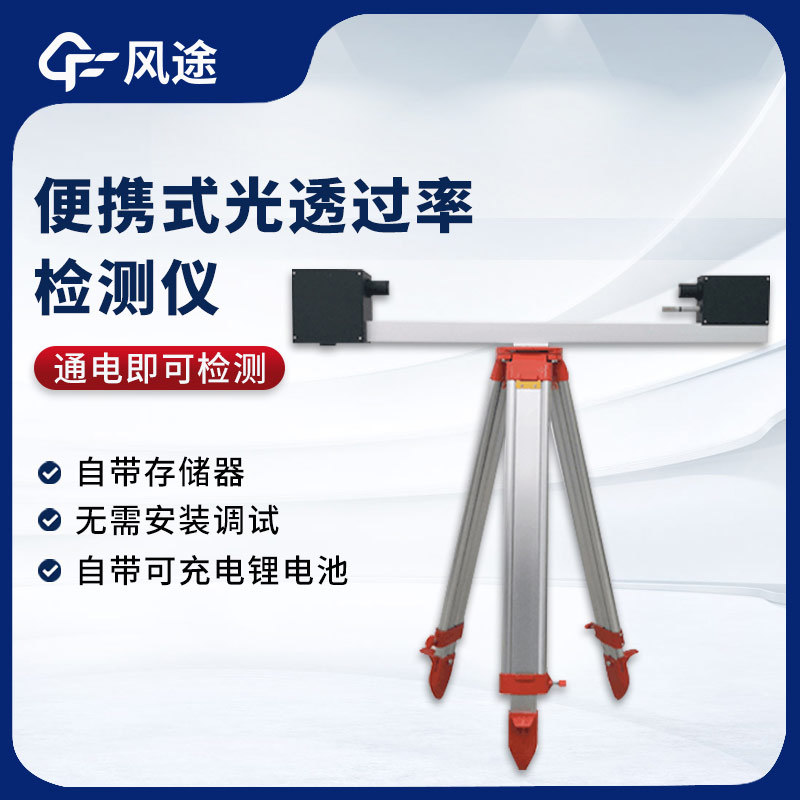Shandong Fengtu IOT Technology Co., Ltd
Sales Manager:Ms. Emily Wang
Cel,Whatsapp,Wechat:+86 15898932201
Email:info@fengtutec.com
Add:No. 155 Optoelectronic Industry Accelerator, Gaoxin District, Weifang, Shandong, China

Sales Manager:Ms. Emily Wang
Cel,Whatsapp,Wechat:+86 15898932201
Email:info@fengtutec.com
Add:No. 155 Optoelectronic Industry Accelerator, Gaoxin District, Weifang, Shandong, China
time:2024-11-19 09:00:29 source:Weather Station viewed:365 time
Atmospheric transmittance refers to the ratio of the luminous flux that passes through the atmosphere to the incident luminous flux when light propagates in the atmosphere. When the atmospheric transmittance is high, it means that more light can successfully propagate in the atmosphere. In this case, the light reflected or emitted by distant objects can relatively easily pass through the atmosphere and reach the observer's eyes, so the visibility is high. For example, under clear, dry, and good air - quality weather conditions, there are fewer interfering factors such as particulate matter and water vapor in the atmosphere, and the atmospheric transmittance is relatively high. People can clearly see distant mountains, buildings, etc., and the visibility can reach several kilometers or even farther.
Conversely, when the atmospheric transmittance is low, the propagation of light in the atmosphere is greatly hindered. This may be due to the presence of a large amount of dust, smoke, thick fog in the atmosphere, or water vapor condensation caused by a high - humidity environment. These factors can cause light to be scattered and absorbed, reducing the amount of light reaching the observer's eyes. For example, in thick foggy weather, tiny water droplets cause the atmospheric transmittance to drop sharply. Most of the light is scattered, and only a small amount of light can propagate in the original direction, resulting in very low visibility, which may be only a few tens of meters or even lower.
In general, the higher the atmospheric transmittance, the higher the visibility; the lower the atmospheric transmittance, the lower the visibility. The two show a positive correlation. This relationship is of great significance for many fields such as meteorology and transportation. For example, in aviation and navigation, pilots and sailors need to judge the navigation safety according to the visibility, and the visibility is closely related to the atmospheric transmittance. Therefore, accurately measuring and understanding the relationship between the two helps to ensure the safety of various transportation modes.
The Light Transmittance Meter is a practical measuring tool. It has various functions and can accurately measure the atmospheric light transmittance, providing a basis for studying atmospheric transparency and the situation of how light propagation is affected by air quality. It can calculate the visibility based on the light transmittance, which is of great significance for transportation fields such as highways, aviation, and navigation, and helps relevant departments implement safety measures and traffic control. It can also detect environmental parameters such as smoke concentration, CO concentration, temperature, and humidity in tunnels to ensure the safe operation of tunnels.
It is easy to operate. The portable design makes it convenient to be carried to various places for measurement. It can start detection once powered on, and the LCD screen displays data in real - time. It has excellent data processing and storage capabilities, can automatically save data, and can be easily exported to a computer and stored in formats such as EXCEL.
It has high measurement accuracy. Based on the principle of light transmission, the sensor and algorithm are precise, and the test error is low. It has strong environmental adaptability and can work stably and accurately within a temperature range of - 40 °C to 80 °C and a humidity range of 0 - 100% RH.

rain gauge wireless for wireless transmission of precipitation, Rain Gauge Wireless is a high-precision, long-range rain gauge that easily and accurately determines rainfall....
Traditional manual monitoring requires staff to regularly visit various monitoring points and collect data using professional tools. When measuring water levels, devices such as levels may be used, and water level heights are recorded through manual readings. For flow velocity measurement, current m...
noise sensor is an electronic device that can measure sound levels or noise signals, monitor ambient noise levels and send data to a platform or controller for remote monitoring....
This time, we will focus on the personnel training and equipment management of the air quality monitoring station.1 Innovate the quality awareness of environmental monitoring and improve the management levelFor grass-roots environmental monitoring work, it is necessary to manage and optimize f...